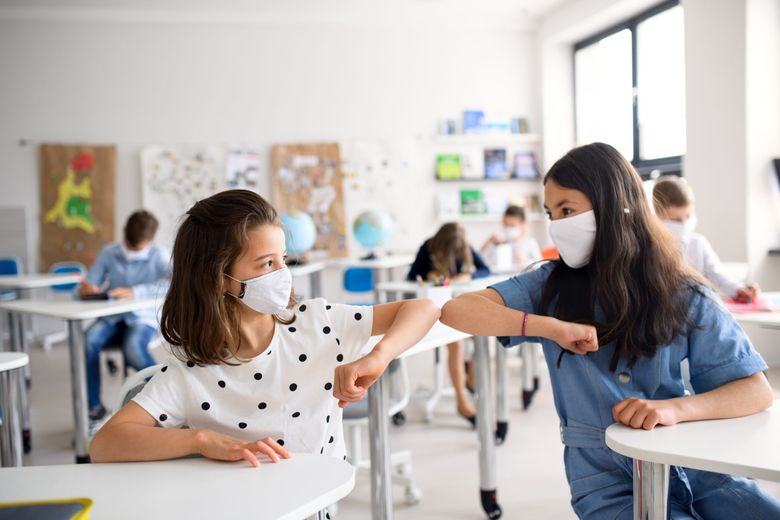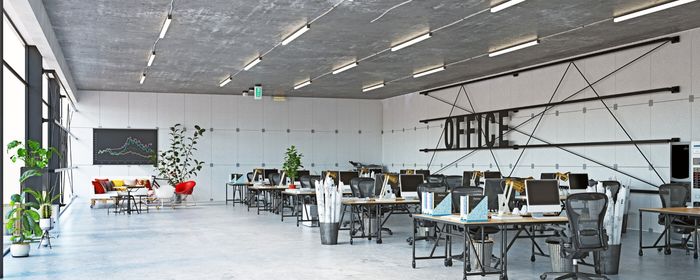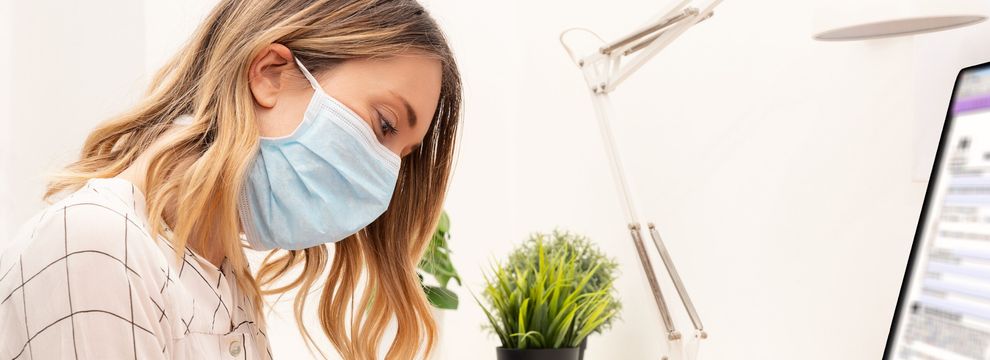With the new school year upon us already in many places, Swiftlane caught up with two school security experts to discuss school security in a Covid-19 world and how to return to school safely. Paul Timm, PSP, vice president at Facility Engineering Associates, has advised hundreds of school systems around the country on security issues. For the last 14 years, A.J. Hamilton has been the head of security for Saint Andrews School, a private Episcopalian institution in Boca Raton, Florida, that serves 1,200 students from pre-K through high school on its 81-acre campus.
As schools consider how to return students and faculty to the physical classroom, there are many considerations, protocols, and safety plans that need to be implemented. Read on for the full interview with security experts around how America can return to school in a post-Covid world.
As schools across the country decide whether to open for in-person classes, online, or some hybrid thereof, what is Saint Andrew’s doing, and how did security contribute?
A.J. Hamilton: As a private institution, we are planning to open, although public schools in the county will not until later on this year. We plan to offer on campus as well as distance learning options. We formed committees that could address different categories of issues and needs, such as Health, Safety, and Operations. These groups also collaborated with divisional academic groups to identify particular needs. We were able to coordinate to ensure that we were communicating across the board between the groups and not siloing information. That was a vital part of the planning process.
I’ve been very focused on the access control protocols. These protocols have shifted to include COVID screening. We are a gated campus that has a completely fenced perimeter, so that is a big advantage. As an independent school, we are fortunate to have the space to create physical distancing in our facilities. We are confident that we can accommodate our full enrollment.
What about getting kids to school? And lunch?
Hamilton: Busing has its own dynamics. We can only put four to six kids on a bus. But we’ve been able to make it work using CDC recommendations.
Feeding the students is another big challenge. We have the typical cafeteria where the students would get in line for food and sit together. We have had to completely revamp that practice. Some kids will be eating in their classrooms, and others in designated outdoor spaces under tents or at picnic tables. It’ll be grab-and-go or delivery service with a continued focus on physical distancing.
You have such a wide age range of students. Physically distancing 4-year-olds is a lot different than 17-year-olds.
Hamilton: We plan to stagger our return by Division. Our lower school will begin first, then our middle school, then the upper school. The lower school is easiest to manage because of the way the building is engineered, and the students are far easier to manage as well. If there is some kind of setback at any point, we can dial back and reassess before bringing in the other divisions on campus.
How do you keep small children away from each other and with masks on?
Hamilton: Masks are going to be a challenge. If kids are constantly touching their faces and adjusting their masks, it defeats the purpose. Touching their faces is a large concern due to the risk of contamination through physical contact. But masks will be required, so it will be a learning curve.
Paul, if schools relax access so students don’t have to touch doors and other surfaces, and it’s hard to identify students when they are wearing masks, what does that mean for active shooter prevention and protection?
Paul Timm: I want to be perfectly clear. I do not love open doors!
We have to be better on the perimeter and more strategic about controlling access. Most schools don’t have fencing or perimeter barriers, which are a big help. It’s going to require better monitoring, better training, and better emergency preparedness.
You’ve consulted for school systems in many states, including Indiana, Idaho, Illinois, Kentucky, Wisconsin, and Missouri. What’s the breakdown on which public schools are opening and which will be online only?
Timm: You can almost track it by environment. Most big cities will not physically open their schools. I’m based in Chicago, and the school system (CPS) has announced it won’t open, but the Chicago Archdiocese schools will open. In Idaho, as you can imagine, all the schools are opening. In the Chicago suburbs, it’s mixed. Some are online only, some are back at school, and others are hybrid.
Recently, pictures went viral that showed a Georgia school where the students were crowded together in hallways and elsewhere without masks on. Is it a big concern that students—and staff—won’t take physical distancing seriously?
Timm: Most teachers are taking social distancing seriously. But yes, it’s a big concern. Health department reports say that you’re 10 times more likely to get COVID in your own home than you are in a public situation because everyone is on top of each other at home and we’re breathing the same air. A school situation is almost like one large home with everyone on top of each other. It’s difficult enough for adults to distance. It’s more so for kids who are seeing each other after a long layoff. We have to be as careful as possible.
Ingrained in us that when someone extends their hand, we shake it. From the teacher’s perspective, do they have to rethink everything they do? Are you helping them retrain themselves with things like greetings, interactions, and occupancy planning?
Hamilton: Training is an important facet. We’re working with our director of nursing to produce a web series on everything from PPE use, to sanitization, to distancing measures. We are trying to train folks out of the habitual kinds of greetings like handshakes, fist bumps, bro hugs, or actual hugs. You really have to hammer that home in the training and maybe provide alternatives.
Is there adequate time for training before schools reopen?
Hamilton: This is our training season. New and returning faculty are returning for professional development and for routine reminders of day to day procedures, as well as active shooter training. We’ve included the Covid training in this two-and-a-half-week period. But it goes beyond education. It has to be reinforced. It can’t just be a one-off video. There has to be signage, continued communication, constant reminders. As adults we set a standard for our children by how we react and conduct ourselves.
What about faculty who are frightened to return to school, especially elderly or immunocompromised teachers?
Hamilton: It’s not just the high-risk folks. Most everyone is at least initially concerned about it. We’ve sent out surveys and held countless meetings to address their concerns. Prior to the opening of school, faculty will be able to look at their classroom setups before school begins.
Obviously we need them back here. We are taking every measure to keep them safe, but there’s no guarantee. We’re showing them that we are doing our best to mitigate any chances of transmission of the virus. And I think I think by and large, it’s been very effective.
Can teachers wear plastic shields to be more comfortable and so students can see their mouths? Some students learn better that way.
Hamilton: Yes, face shields are part of the care package the school is distributing to faculty and staff. We are also supplying masks and other PPE. Faculty will be required to wear masks in class while teaching. The face shields do not alone provide adequate protection.
Generally speaking, how are teachers feeling about returning to school?
Timm: The greater concerns are in the urban areas or in the states with more cases. At the same time, I work with a lot of teachers—sometimes in urban areas—who are desperate to return because they believe the kids need to be physically back in school to learn. My own 22-year-old daughter is eager to do her student-teaching semester at college, but the college doesn’t know whether K-12 schools will open and whether she’ll have an assignment. Of course, she’s young and healthy. It changes if you have any health predispositions or concerns.
AJ, will Saint Andrews implement temperature checking, screening, or testing protocols for faculty and staff?
Hamilton: Not testing, but we are leaning on staff for accountability. We are using an app that faculty and staff will have to complete before arriving to work, which will identify possible infection or other concerns.
Moving from Covid for a second, we are seeing students engaged in civil protests and finding their voice, and in some areas there is distrust of law enforcement figures. Are you concerned that students will see school resource officers or security as instruments of oppression and will try to have them removed?
Timm: Again, it depends on where the school is. In urban areas, sometimes the police officer was put into the school as a disciplinary measure: they got stuck in a school, and they didn’t form relationships with students. In the suburbs and in rural settings we find a very different situation. Sometimes SROs have more of an impact on the lives of these kids than anyone else in the building.
But it’s great that students feel empowered and are engaging in societal issues. If I were a school administrator, now would be the time to get the students involved so they have some kind of voice in what we’re doing. Looking at them as disruptive is a big mistake. Some students are leading today’s protests, with pure motives. I say, let’s engage in dialogue. It’s time to collaborate.
I asked earlier about how you can be sure that the teenager entering your school is a student if they are wearing a mask. What about smaller kids, who may share masks?
Timm: Right, kids might arrive at school wearing a Spider-Man mask. But then they come home wearing their friend’s Batman mask. AJ, how do you deal with that?
Hamilton: For both the older person who might not be a student and the younger kids trading masks, staff and faculty have to be alert, and that’s part of the training. Another issue, which you touched on in the political question, is making sure that messages on masks aren’t offensive or inappropriate for a school setting.
Will yesterday’s bomb threats be today’s Covid threats? “Close the school or I will infect everyone with coronavirus?”
Timm: Great question. Schools will have to consider those possibilities carefully.
What steps are you advising schools to take for preoccupancy planning?
Timm: Cleaning, of course. Even knowing the ratings of the cleaning supplies you are using is important. How long you have to leave it on a surface before it will disinfect. And where to place hand sanitizer stations such as not to impede egress, where to safely store flammable sanitizing and cleaning products. We’ve been helping a lot of people create cleaning plans following CDC and state and local guidance. Also, remember that school buildings haven’t been used for months, so operations and maintenance staff have to make sure systems are ready to go.
What haven’t we asked about return to school that you’d like to communicate?
Timm: By law, drills such as fire and lockdown have to happen soon after schools open. Should we have kids pressing together shoulder to shoulder? For lockdown, some schools are explaining what to do in an emergency but not requiring the students to practice it. We also need to point out emergency evacuation maps, which people rarely even notice. Once people evacuate, where can they congregate outside the school that is socially distanced? In an actual emergency, of course, none of these adaptations matter because survival is of ultimate importance.
Hamilton: We are a partly residential campus, about 180 out of 1,200 students during a normal school year, International students will be arriving to our campus shortly. Their numbers are small, but they are the heartbeat of the school after the day students exit campus. We are prepared to quarantine students outside the dormitories in case a resident student becomes symptomatic or tests positive. But how do we cater to them to provide a positive experience while mitigating as much risk as possible? How do we give them every opportunity to thrive academically? That’s our mission.





